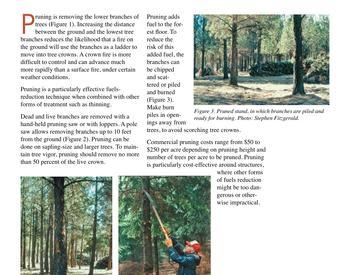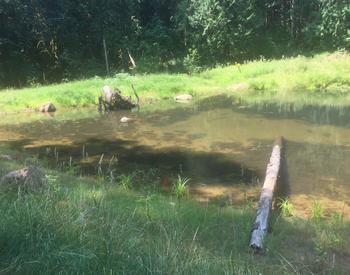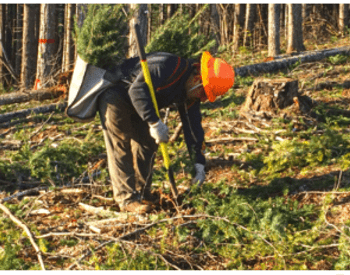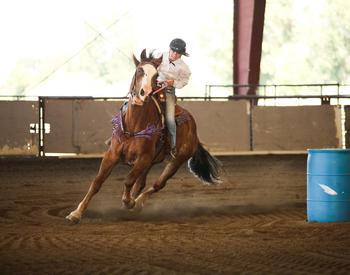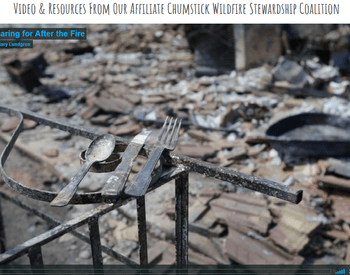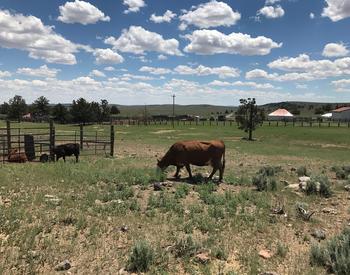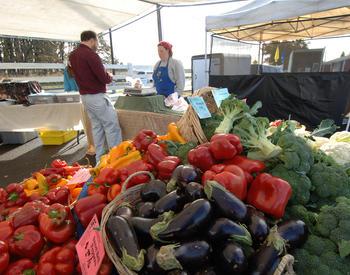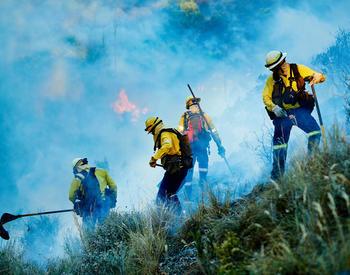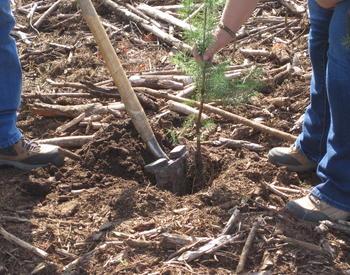CORVALLIS, Ore. – The skies threatened to open, but 20 trainees in heavy coats with mud stuck to their boots gathered in the Oregon State University Dunn Forest for lessons in prescribed fire.
The day was gray, but not the enthusiasm of the participants from the Natural Resources Conservation Service (NRCS), who climbed into trucks to carpool up the hill to a recently harvested patch of forest. Two piles of debris at least 15 feet tall stood waiting for them, one wet and one dry. Across the valley an oak savannah, an endangered habitat traditionally restored by fire, gave credence to the controlled burning techniques being taught.
The class – taught by OSU Forestry and Natural Resources Extension (FNR) faculty – was a three-day learning experience for employees of NRCS, which consults with private landowners about land-use restoration solutions.
“We put together a curriculum to teach NRCS participants the basic foundations of prescribed fire,” said Carrie Berger, Extension Fire Program manager, as she walked up the hill from the burning piles of forest slash. “We’re giving them the information they’ll need to recommend prescribed fire as a practice, as a tool for landowners to use on their property.”
In order to recommend prescribed fire, NRCS staff need to be certified, according to Tom Snyder, who works in the Eugene NRCS field office and concentrates on oak woodland and savannah, a fire-adapted landscape that’s been shaped for thousands of years through intentional burning by the Indigenous peoples of what are now known as the Confederated Tribes of Grand Ronde and Confederated Tribes of Siletz Indians.
To this day, Native Americans use fire to produce quality basketry materials such as beargrass, hazel and willow. They also use fire to maintain habitat for food and medicine plants such as camas, biscuitroot and huckleberries, according to Berger. Cultural burning supports wildlife habitat and plays an important part in the traditions, culture and sovereignty of tribes. Tribal burning practices in Oregon today are diverse. They range from small, family-oriented burns focused on single cultural species to large-scale burns on reservation forests.
“We’ve been doing restoration without fire, which is the tool that created this landscape,” Snyder said, speaking over the crackling sound of burning wood piles. “We’ll be able to use fire in the future as part of our restoration methodology within the Willamette Valley.”
In most cases, landowners use heavy machinery, mowing, spraying and grazing to thin out overgrown land, according to Stephen Fitzgerald, Extension silviculture specialist and director of the OSU College of Forestry Research Forests. Grazing is better than mowing because there’s no thatch buildup that remains as fuel for wildfires. But nothing beats fire.
“Some threatened and endangered species, like Fender’s blue butterfly, are associated with open habitat,” Fitzgerald said. “Not so much with closed wood canopy but more grass prairie, open upland prairie and oak savannah. Here we’re reducing the risk of wildfire and creating spots for reforestation. We can use fire to rejuvenate the oak prairie. Fire recycles nutrients and causes a flush of growth. Then those plants support insects, which are important pollinators, and other wildlife.”
In the classroom, participants from around the state studied fuels, weather and learned about planning strategy before any fire is involved. In the field they put that education into practice by following the lead of the instructors, who lit the piles of slash generated by a recent timber harvest. One pile had been covered during recent rain, the other left open to the elements. Trainees experienced some hands-on work lighting fire. They also tried their hands at broadcast burning where fire is applied to debris left on the forest floor and not turned into piles. The idea, said Amanda Rau, Extension Fire Program's fire specialist in the Willamette Valley and North Cascades areas, is to understand the difference between what happens when you light a fire under appropriate and inappropriate conditions.
“That helps the students better educate landowners about conditions under which to burn and how to construct piles and make sure they are dry enough, so they don’t produce a lot of smoke,” Rau said. “We want to have the kind of fire behavior that is controllable, predictable and within the objectives that are set forth for the prescribed burn.”
Generally, fire is used to manipulate dead and/or live vegetation. The objectives vary considerably depending on vegetation type and the natural resource intent of the landowner, Rau said. For the workshop, the NRCS trainees participated in post-harvest disposal using fire to remove slash. In order to reduce the hazard of fire from logging, it’s essential to remove the debris.
“And the best way to remove slash is using fire,” said Rau, who acted as burn boss for the day. “When I say best, I mean the most efficient. There are other mechanisms for using slash like taking it off site and generating energy with it or using it for firewood. But there’s typically not enough energy demand or yield to justify removing the amount of material out on the landscape. Fire historically has been a tool for that removal, whether you’re talking about tribes or early colonial settlers or loggers. That’s what we’re doing today: using an age-old tool to reduce that material.”
Planning the burn
Fitzgerald, who was the firing boss for the training, said he was happy with the conditions of the burn because experienced different types of fire and smoke.
“Smoke is a health hazard, so when we burn, we want to burn under conditions or create conditions where the fire burns more cleanly and there’s less smoke,” said Fitzgerald as he flicked a hand toward a safely burning pile of slash. “They got to see that hands-down. One pile was covered and one was not. One was a smoky fire and the other went up beautifully with very little smoke.”
Preparing for a controlled burn means writing a plan, keeping an eye on the weather and getting permits from the Oregon Department of Forestry to ensure air quality isn’t negatively impacted by the smoke being produced. Weather determines if the smoke is likely to go into a populated area or cause a wildfire danger. There are a lot of checks and balances to ensure everything is ready to go on burn day, Rau said.
Lexi Gardner, who works for NCRS in Linn and Benton counties, said the class helped her recognize the importance of relaying to landowners all the planning and inventory that needs to happen before prescribed fire is on the land.
“Educating landowners will be super important, notifying them about what kind of liabilities that will be on the ground and also recommending what we can do as NRCS to help convey safety information,” Gardner said. “In general, talking the lingo of prescribed fire is going to be important and I’ve learned a lot about that and how to communicate with landowners.”
As the chilly day wound down, trainees and teachers who were lucky enough to avoid rain bundled into trucks for a ride back to the Forestry Club Cabin a couple of miles down the hill.
“The hardest part in teaching prescribed burning is being able to show or talk about all the accumulated knowledge of people who have been doing burning all of their career,” Fitzgerald said. “It’s hard to translate that in a short training period. The fun part is bringing them out here and actually doing some fire and having them participate and ask questions about things they’ve probably been thinking about for a long time.”


